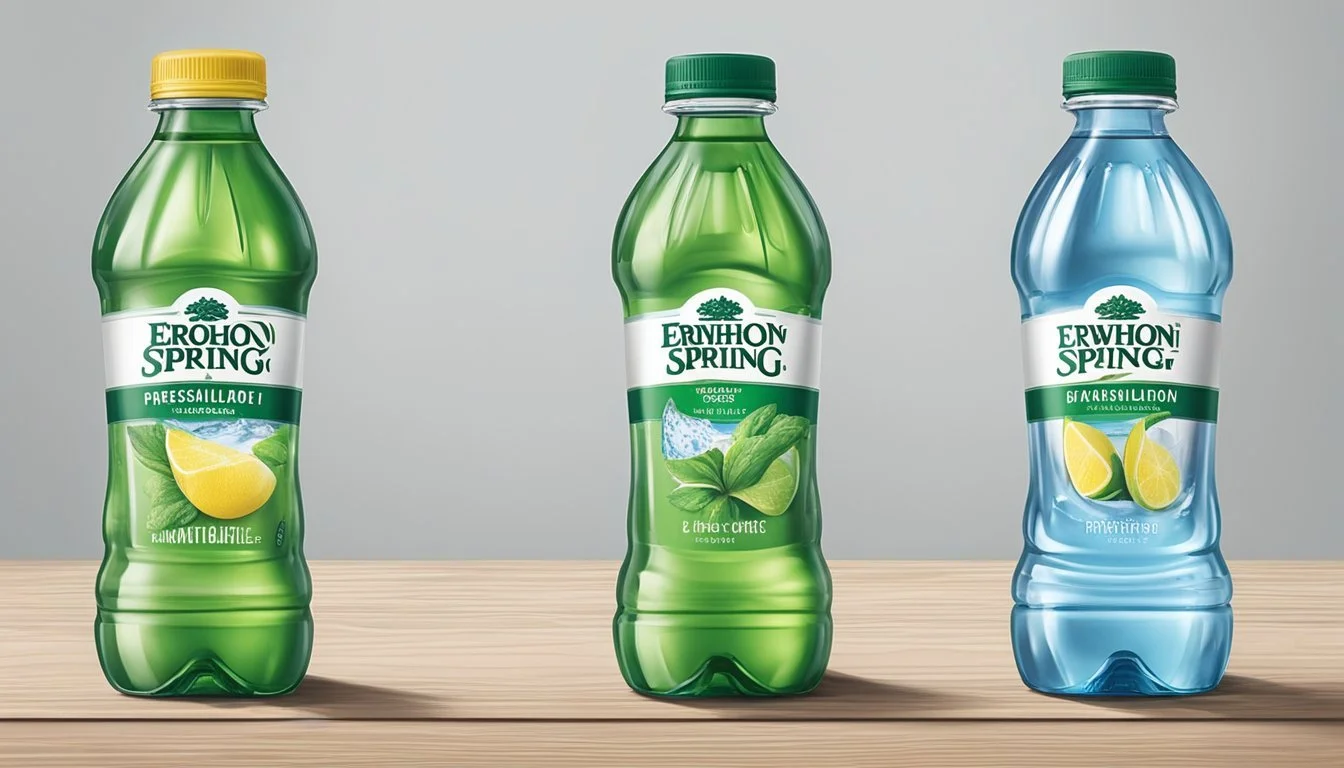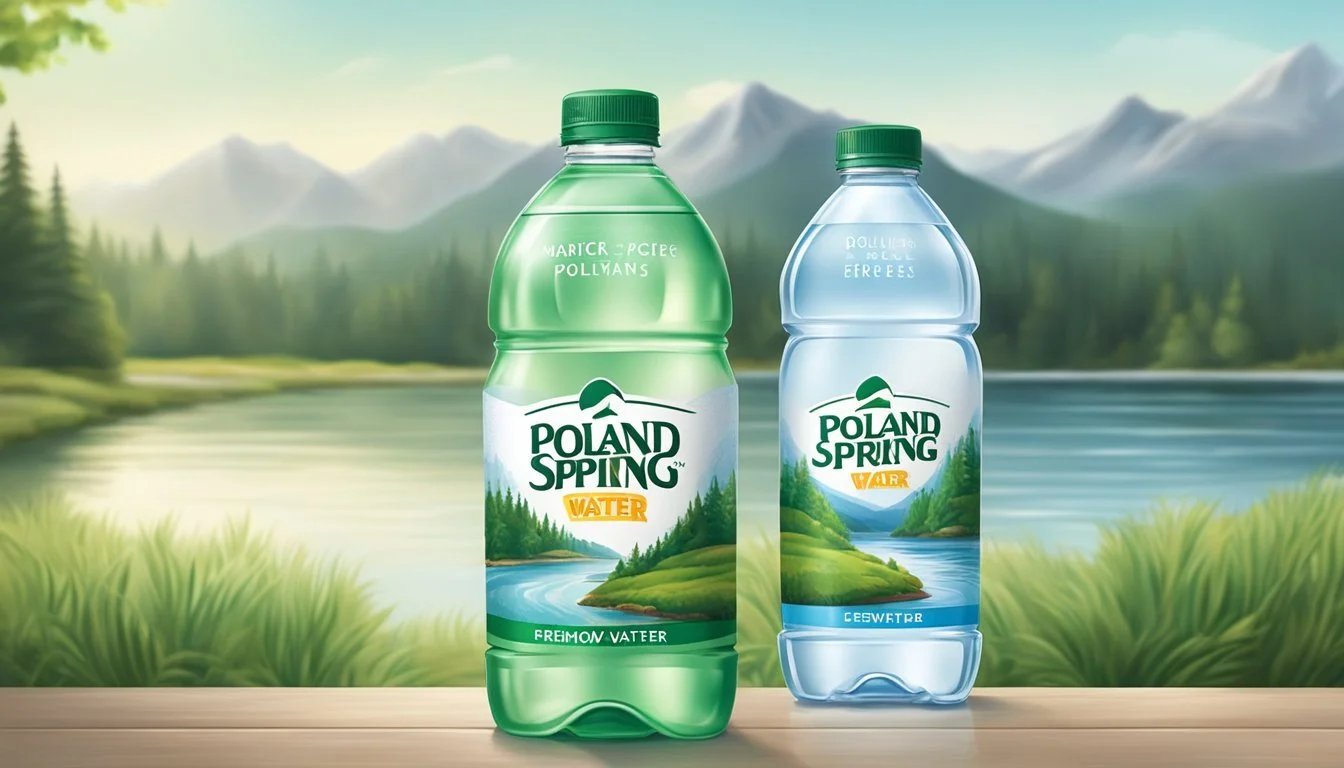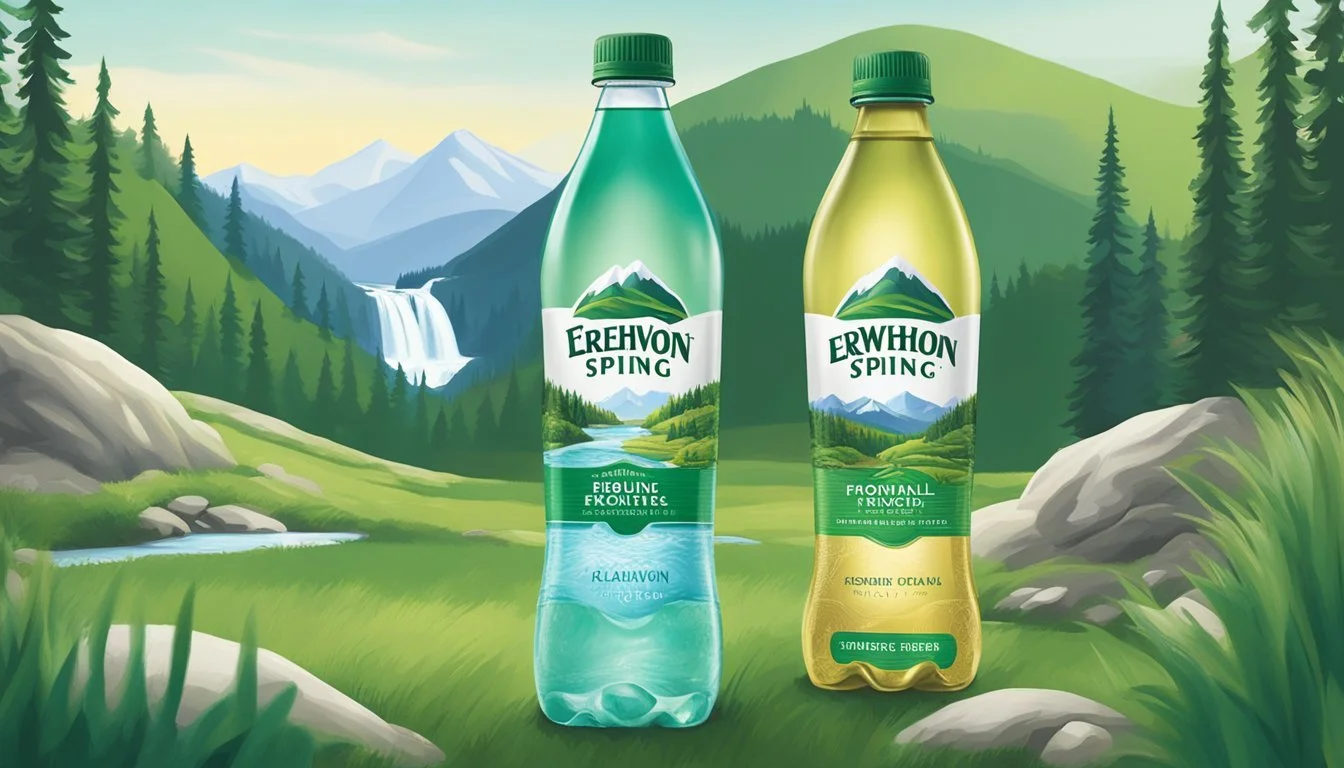Poland Spring vs. Erewhon
Comparing Quality and Taste of Bottled Water
When it comes to bottled water, two brands often stand out: Poland Spring and Erewhon. Poland Spring, a household name, has built its reputation on providing economical spring water sourced from Maine. In contrast, Erewhon offers premium bottled water that attracts a more discerning clientele willing to pay for what they perceive as higher quality.
In a direct comparison, Erewhon water tends to be pricier, yet many users claim it tastes better and feels purer than Poland Spring. For those who prioritize affordability and widespread availability, Poland Spring may seem like the better choice.
However, recent concerns about microplastics in Poland Spring bottles have raised questions about its safety. Erewhon, being a premium brand, often comes under scrutiny for its high price but is praised for stringent quality checks. This comparison sets the stage for an in-depth look at which of these two bottled waters truly stands up to their claims and consumer expectations.
Understanding Bottled Water
Bottled water comes in various types, each with unique characteristics. Regulatory bodies ensure safety and quality, while environmental considerations impact the choice of bottled water.
Types of Bottled Water
Bottled water is categorized by its source and treatment process. Spring water flows to the surface from an underground formation and must be bottled at the source. Purified water undergoes treatments like distillation or reverse osmosis, removing most impurities and minerals. Mineral water contains specific amounts of minerals and electrolytes and is often sought for its potential health benefits. Natural spring water maintains its mineral composition from the source and is less processed.
Regulatory Framework
The EPA (Environmental Protection Agency) sets standards for tap water, while the FDA (Food and Drug Administration) regulates bottled water. Bottled water must meet health and safety standards for contaminants and be accurately labeled. Spring, purified, and mineral waters are subject to different regulations based on their sources and treatment methods. Ensuring compliance with these standards is critical for consumer safety and maintaining trust in bottled water brands.
Environmental Impact
Bottled water's environmental impact is significant. Production and transportation contribute to carbon emissions, while plastic bottles often end in landfills unless properly recycled. Many companies are shifting towards eco-friendly practices, using recycled materials and promoting sustainability. Efforts to reduce plastic waste and improve recycling can mitigate these negative effects, making it essential for consumers to consider the environmental footprint of their bottled water choices.
Profile of Poland Spring and Erewhon
Poland Spring and Erewhon both offer unique attributes regarding their sources, purification processes, and company practices. This section provides a comparative view of these aspects.
Origin and Source
Poland Spring: Originates from multiple natural springs in Maine, primarily Poland Spring, Garden Spring, Cold Springs, Spruce Spring, Clear Spring, White Cedar Spring, and Evergreen Spring. Sourced from these locations, the brand taps into groundwater to deliver spring water known for its purity and minimal mineral content.
Erewhon: The origin of Erewhon bottled water varies, but it is often sourced from artesian wells and natural aquifers. These sources are selected for their pristine quality and remote locations. Unlike Poland Spring, Erewhon prioritizes sourcing from areas free from industrial pollution to ensure a higher level of natural purity.
Production and Purification Processes
Poland Spring: The water undergoes a multi-step filtration process including microfiltration, carbon filtration, and ultraviolet light treatment. Nestlé, the parent company, ensures that the purification process maintains the water's natural mineral content while meeting stringent quality standards.
Erewhon: Uses a sophisticated purification process known as hydro-7, which involves seven stages of filtration including reverse osmosis, UV treatment, and deionization. This thorough method removes contaminants and ensures the water is exceptionally pure. Erewhon’s process emphasizes the absence of additives and the retention of natural mineral balance.
Company Ethos and Practices
Poland Spring: Operated by Nestlé, the brand focuses on sustainability and environmental responsibility. They invest in water conservation projects and ensure that their sources are sustainably managed. The company also emphasizes transparency, providing detailed water quality reports to consumers.
Erewhon: Known for its commitment to quality and ethical practices, Erewhon emphasizes organic and minimally processed products. Their ethos centers around wellness, purity, and sustainability. Erewhon prioritizes responsible sourcing and works to minimize its carbon footprint through eco-friendly practices and packaging solutions.
These profiles highlight the distinct characteristics and practices of Poland Spring and Erewhon, providing a clear comparison for those interested in their bottled water options.
Analyzing Quality and Purity
When comparing the quality and purity of Poland Spring and Erewhon bottled water, it is essential to investigate their mineral content and perform thorough contaminant and purity tests.
Mineral Content Analysis
Poland Spring sources its water from various springs in the United States. The water is rich in minerals like calcium and magnesium, contributing to its distinct taste.
Erewhon, known for its emphasis on high-quality natural products, also offers bottled water with a notable mineral profile. They focus on sourcing water from pristine locations, ensuring a balance of essential minerals.
A comparison of mineral content reveals:
Calcium: Poland Spring has approximately 6.3 mg/L, Erewhon around 5 mg/L.
Magnesium: Poland Spring contains about 1.4 mg/L, Erewhon features 2 mg/L.
Sodium: Poland Spring offers lower sodium levels, typically around 1 mg/L.
Contaminant and Purity Tests
Poland Spring adheres to FDA and EPA guidelines, undergoing regular third-party testing to ensure safety. They focus on eliminating contaminants like heavy metals and chlorine. Their bottled water is rigorously tested to maintain high-quality standards.
Erewhon places a premium on purity, emphasizing products free from PFAS chemicals. They perform advanced purity tests, checking for contaminants such as lead, arsenic, and other harmful substances. The commitment to purity extends beyond regulatory requirements, aiming for ultra-low levels of all contaminants.
In summary, both brands prioritize quality and purity through stringent testing and careful sourcing practices. Poland Spring leans on traditional mineral-rich springs, while Erewhon emphasizes cutting-edge purity standards.
Taste and Hydration
When evaluating bottled water, both flavor and hydration properties are critical. Different waters can have unique taste profiles and varying degrees of hydration efficiency due to their mineral content.
Taste Profile Notes
Poland Spring offers a taste that is crisp and clean, often described as lightly sweet. The water's natural origin from springs in Maine contributes to its fresh flavor. A slight mineral presence adds complexity, but the taste remains smooth and consistently pleasant.
Erewhon water, on the other hand, is renowned for its purity. It has a neutral taste that is typically free of any mineral aftertaste. Its clean profile can appeal to those who prefer a less pronounced flavor when hydrating. Such neutrality makes Erewhon suitable for sensitive palates.
Both brands stand out in blind taste tests, with Poland Spring often winning for its distinct but mild mineral notes. Erewhon ranks high for those seeking an exceptionally clean taste, free from any tang or metallic hints.
Hydration Efficiency
Poland Spring contains essential minerals like magnesium, calcium, and a trace of sodium, which can aid in hydration. These minerals contribute to maintaining electrolytic balance in the body, facilitating better hydration compared to demineralized water.
In contrast, Erewhon emphasizes purity, often being minimally mineralized or purified through advanced processes. This can result in a slightly softer water, making it easier to drink in larger quantities without feeling bloated.
Although low in minerals, Erewhon still provides effective hydration. It's an excellent choice for those who require high water intake without the additional mineral content that might be present in other brands.
Comparing the two, Poland Spring offers the benefits of balanced mineral content, enhancing overall hydration. Erewhon excels in delivering clean, soft water, suitable for all-day consumption and those with specific mineral restrictions.
Health and Safety Considerations
Health and safety are paramount when choosing between Poland Spring and Erewhon bottled water. Evaluating factors like pH levels, electrolytes, and potential contaminants is essential to making an informed decision.
pH and Electrolytes
The pH level of water impacts its acidity or alkalinity, which can influence digestion and overall health. Poland Spring typically has a pH range of 6.5-7.5, which is neutral and safe for consumption. Erewhon bottled water often tests slightly alkaline, ranging from 7.5 to 8.0, which some consumers prefer for its potential health benefits.
Electrolytes such as calcium, magnesium, and potassium are naturally occurring in many spring waters. Poland Spring contains traces of these minerals, contributing to its taste and nutritional value. Erewhon water is often marketed for its higher levels of natural electrolytes, promoting it as more hydrating, particularly for active individuals.
Heavy Metals and Chemicals
Concerns about heavy metals and chemicals like lead or PFAS (per- and polyfluoroalkyl substances) are significant when assessing water safety. Both brands adhere to regulatory standards, but scrutiny reveals differences.
Poland Spring has faced lawsuits alleging the presence of microplastics and synthetic chemicals such as phthalates. Continuous testing and regulatory oversight ensure contamination levels remain within safe limits, but consumers remain cautious.
Erewhon water is praised for its rigorous sourcing processes, often subjected to independent testing for contaminants. The absence of PFAS and heavy metals like lead is a strong selling point, appealing to health-conscious buyers wary of chemical exposure.
Ensuring both brands meet strict safety standards provides confidence to consumers prioritizing their health and well-being.
Practical Aspects of Bottled Water Consumption
Poland Spring and Erewhon offer varied advantages when it comes to practical use. Each brand's offerings can be characterized by different aspects of convenience and packaging.
Convenience and Use Cases
Poland Spring and Erewhon cater to different user needs and scenarios. Poland Spring is widely available in convenience stores, supermarkets, and vending machines across the United States, making it a go-to for on-the-go consumers. Its versatility allows it to be suitable for daily hydration, sports activities, and office settings.
Erewhon, known for its premium and often organic products, tends to appeal to health-conscious individuals and those looking for high-end options. It may be found more frequently in specialty stores and high-end grocery retailers. Both brands provide options in various bottle sizes, which can affect ease of carrying and storage.
Packaging and Accessibility
When considering packaging, Poland Spring generally uses recyclable PET plastic bottles, available in multiple sizes such as 16.9 oz, 1-liter, and 1.5-liter, which cater to different consumption needs. Their products are easy to open and feature user-friendly caps, providing added convenience for various age groups.
Erewhon focuses on sustainable packaging, sometimes offering boxed water or bottles made from recycled materials. This aligns with consumer preferences for environmentally friendly options. Accessibility-wise, Erewhon’s distribution channels are narrower compared to Poland Spring, often limited to specific regions or high-end retailers, which might limit easy access for some consumers.
Both brands aim to cater to their specific consumer bases through their unique packaging strategies and availability channels.
Comparison and Recommendations
Poland Spring and Erewhon bottled waters differ in several key aspects, including source, taste, and price. This section will evaluate these differences and weigh the advantages and disadvantages of each brand.
Comparative Analysis
Source: Poland Spring, sourced from multiple springs in Maine, offers spring water with consistency and reliability. Erewhon, typically sourced from artisanal springs, often focuses on purity and sustainability.
Taste: Poland Spring has a crisp, clean taste due to its mineral balance. Erewhon water tends to have a more subtle, natural flavor, which some may find more refreshing.
Price: Generally, Erewhon bottled water is more expensive due to its premium positioning and focus on quality. Poland Spring is more economical and widely available, making it a convenient choice for everyday use.
Pros and Cons
Poland Spring:
Pros:
Affordability: More cost-effective for daily consumption.
Availability: Widely available across the United States.
Consistency: Reliable taste and quality due to standardized sources.
Cons:
Flavor Sensitivity: Some may find a slight tang in the aftertaste.
Standardization: Less focus on artisanal sources compared to premium brands.
Erewhon:
Pros:
Purity: Often sourced from pristine, artisanal springs, emphasizing high quality.
Taste: More subtle and natural flavors.
Cons:
Price: Higher cost due to its premium status.
Availability: Limited distribution, making it harder to find in some regions.
More About Poland Spring
Acqua Panna vs Poland Spring: Which Bottled Water is Better?
Boxed Water vs Poland Spring: Which Bottled Water is Better?
Core Hydration vs Poland Spring: Which Bottled Water is Better?
Ice Mountain vs Poland Spring: Which Bottled Water is Better?
Icelandic Glacial vs Poland Spring: Which Bottled Water is Better?
Mountain Valley Spring Water vs Poland Spring: Which Bottled Water is Better?
Nestle Pure Life vs Poland Spring: Which Bottled Water is Better?
Poland Spring vs Aqua Carpatica: Which Bottled Water is Better?
Poland Spring vs Cascade Mountain: Which Bottled Water is Better?
Poland Spring vs Castle Rock: Which Bottled Water is Better?
Poland Spring vs Crystal Geyser: Which Bottled Water is Better?
Poland Spring vs Crystal Lake: Which Bottled Water is Better?
Poland Spring vs Essence pH10: Which Bottled Water is Better?
Poland Spring vs Hawaii Volcanic: Which Bottled Water is Better?
Poland Spring vs Hawaiian Springs: Which Bottled Water is Better?
Poland Spring vs Kirkland Signature: Which Bottled Water is Better?
Poland Spring vs Liquid Death: Which Bottled Water is Better?
Poland Spring vs Proud Source: Which Bottled Water is Better?
Poland Spring vs Purely Sedona: Which Bottled Water is Better?
Poland Spring vs Richard's Rainwater: Which Bottled Water is Better?
Poland Spring vs San Pellegrino: Which Bottled Water is Better?
Poland Spring vs Simple Truth: Which Bottled Water is Better?
Poland Spring vs Solan de Cabras: Which Bottled Water is Better?
Poland Spring vs Talking Rain AQA: Which Bottled Water is Better?
Poland Spring vs Weird Water: Which Bottled Water is Better?
Poland Spring vs Whole Foods 365: Which Bottled Water is Better?
Poland Spring vs Whole Foods Italian Still Mineral water: Which Bottled Water is Better?
Poland Spring vs Zephyrhills: Which Bottled Water is Better?
More About Erewhon
Erewhon vs Kirkland Signature: Which Bottled Water is Better?
Erewhon vs Richard's Rainwater: Which Bottled Water is Better?
Erewhon vs Whole Foods Italian Still Mineral water: Which Bottled Water is Better?
Icelandic Glacial vs Erewhon: Which Bottled Water is Better?
Mountain Valley Spring Water vs Erewhon: Which Bottled Water is Better?




